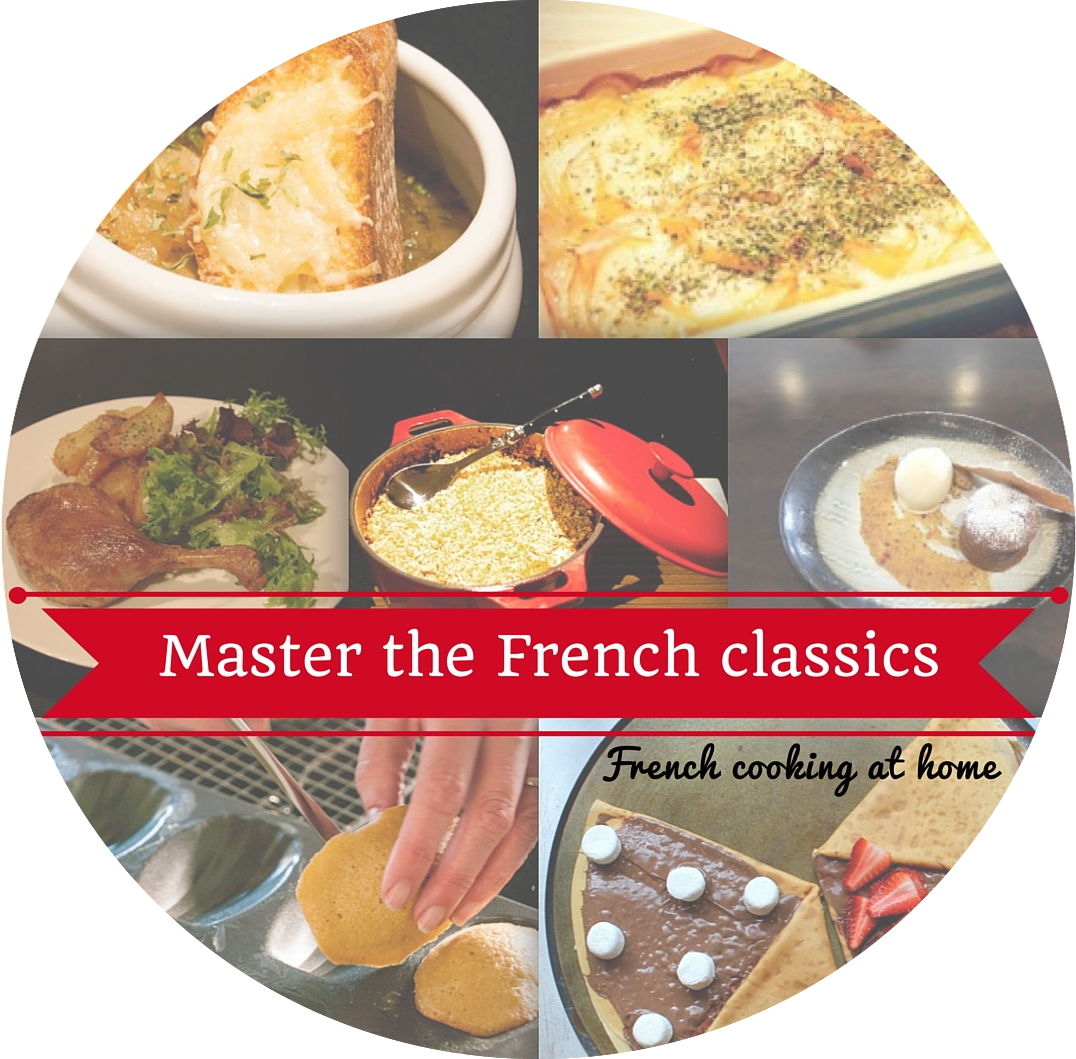Mastering classic French cooking at home: Cassoulet
Oh, to have a repertoire of French cuisine classics that you can whip up at home and know that they’ll be fantastic – every time!
Have you always dreamed of mastering French cuisine? Years ago I attended a course with Le Cordon Bleu in London and I have a very early (1978) copy of Julia Child’s ‘Mastering the Art of French Cooking‘, now very yellow and food stained by successful and not so masterful attempts!
Like many of you, I’ve also read the book and seen the 2009 film Julie & Julia, with Amy Adams as Julie Powell and Meryl Streep as Julia Child. Upon hearing about Powell’s attempt at replicating all her recipes, Child was reported to have been unimpressed, viewing Powell’s attempt to be a stunt, and that Powell wasn’t serious about doing it.
We’re passionate about continuing the challenge of mastering classic French cooking at home without having professional training.
In this series we bring you tips and recipes from others who share our passion.
Back in the kitchen with Janelle
As our readers in Australia head closer towards the winter season, Janelle Gould of the Distant Francophile blog is back in the kitchen to share with us her tips on how to cook one of her favourite winter warmers – Cassoulet, another classic of French cuisine. Often a dish that is percieved as complicated, Janelle shows us how to prepare a Cassoulet without the stress, whilst her husband Scott is on hand to take the photos.
Janelle says: “The weather turned decidedly cold in Melbourne today. And when the weather turns cold, I immediately want to cook that French classic – cassoulet.
Cassoulet – a hearty mix of meat and beans – originated in the south-west of France, and is particularly associated with the towns of Carcassonne and Castelnaudary.
We first discovered the dish when Scott ordered it in Philippe Mouchel’s now extinct Melbourne brasserie, many years ago. We immediately fell for the flavours and I spent a lot of time trying to track down an authentic recipe.
Of course, as with any dish that has evolved over time, there can be much debate as to what makes a ‘true’ cassoulet. The meats included and the inclusion – or not – of breadcrumbs seem to be at the forefront of these debates.
As a result of my research, my cassoulet has also changed over the years – but it is still basically a mishmash of two excellent recipes. The first is taken from a work originally published in 1950 – Elizabeth David’s A Book of Mediterranean Food (Penguin Books, 1991). The second is from Philippe Mouchel himself, taken from his book More than French (written with Rita Erlich, Slattery Media, 2011). I used Mouchel’s recipe to enhance what I had already taken from David’s.
On the surface, cooking a cassoulet can seem a little a bit daunting – it can look like there are lots of ingredients and steps – but it really is quite simple to do. You don’t have to be too accurate with your measurements and as you will see below, the ingredients are also quite forgiving and easily substituted.
And it makes for an excellent way to spend an afternoon when it is cold and wet outside – the house ends up smelling delicious.
Cassoulet
Now before you start, I have a few tips. The first one is a big one. If, like is usually the case for me, you don’t know that you will be cooking cassoulet in enough time to soak the beans overnight you can use Elizabeth David’s great trick – hot soaking. Simply add the beans to a big pot, cover generously with cold water and bring the pot to the boil. As soon as the water is boiling, turn off the heat and whack the lid on the pot. Soak the beans for 40 minutes before draining and using the beans as usual. David suggests discarding the soaking water outside as it can take on quite a smell – and I’d have to agree.
The second tip is pretty basic – I sometimes add carrot and celery to the onions and garlic if I have them in the fridge. It makes me feel like I am adding some extra value to the cassoulet via the vegetables.
Thirdly, don’t add any salt to the beans before they are cooked – otherwise they could end up tough.
This cassoulet serves at least 4 hungry people. I hope you enjoy mastering this French classic.”
Ingredients
- 2 tablespoon of duck fat (olive oil is fine if you don’t have duck fat).
- 1 large onion, diced.
- 2 large garlic cloves, chopped.
- 250g piece of very smokey bacon, speck or kaiserfleish, cut into cubes or lardons.
- Generous pinch of dried thyme.
- 250ml of white wine.
- 1 400g tin of chopped tomatoes.
- 500g of dried white beans (like haricot, cannellini or great northern), soaked overnight.
- 1 large lamb shank.
- 3 good quality pork sausages (Toulouse sausages are traditional, but they can be a bit hard to find).
- 2 pieces of confit duck (again, confit duck can be hard to track down unless you feel like making your own – 2 fresh duck breasts or marylands will do the trick if you can’t find confit duck).
- Breadcrumbs, for topping the cassoulet.
Method
- Preheat your oven to 150 degrees celsius.
- In a heavy based pot or casserole, large enough to hold the finished cassoulet, lightly fry the onions, garlic and bacon in one tablespoon of the duck fat until the onion is soft but not browning.
- Add the tomatoes, thyme and wine to the pot – let it come to a simmer.
- Drain the beans and stir them into the tomato and onion mixture. Pour in enough water to just cover the beans, pop the lid on and bring everything back to a simmer.
- Once simmering, place the pot in the oven and cook slowly until the beans are tender. This can take up to 2 hours – so stir the beans occasionally. Once the beans are done, drain off any excess liquid – the beans should neither be too dry or too wet.
- While the beans are cooking, slowly roast the lamb shank and the sausages (and the fresh duck, if using) in the remaining duck fat in the oven. The shank will take the longest – remove and cover the sausages and duck (if using) when they are done.
- Chop the lamb, sausages and duck (either confit or slow roasted) into large chunks and stir through the now tender beans. Put the lid back on the cassoulet and return the whole lot to the oven for about an hour.
- When you are almost ready to eat, top the cassoulet with the breadcrumbs and return to the oven to form a golden crust.
- Serve in deep bowls, with a salad, if you feel like it. Any leftovers reheat well.
This recipe was originally published on DistantFrancophile.com. Thank you for collaborating with us Janelle “Until next time – au revoir.”
Do you have a favourite winter warmer dish? What is your opinion on the inclusion of breadcrumbs in a Cassoulet? Share your thoughts and experiences with us below!
Indulge yourself with more delicious recipes in our series of how to Master French Classics…
Moelleux au Chocolat // French Onion Soup // Duck confit
Image Credits:
1. Collage of images taken by Scott Gould2. Janelle and Scott by Carla Coulson
3. Cassoulet by Scott Gould










Non.
First, this is like my time-travel kim chee recipe “first, get a tardis, this can be hard to track down”. the entire physics of the cassoulet, is that the adsorptive power of the starch and vegetables takes the oil FROM the comfit which otherwise would be disgusting and puts it into the starch and vegetables where it is a wonderful flavoring. You ignore that you have a 3 to 5 hr fat cooking step essential to the recipe.
second, By using canned butter beans instead of Julia’s 11 and a half hour cooked ones (no wonder I never have success with dried beans, I can’t keep them going for more than 10 hrs at the most!)
and third, by using my entropy oven for the 5 hr comfit (kickstarter in September 2022, right now working on the 200+ page instruction manual), I get the actual prepration work to about 30-40 minutes. It still has 5 hrs to make comfit.
In summary, the main point of your actually great recipe is that the original Julia was so horrible to actually do that i seriously wonder about liability issues using 5 hrs of bubbling fat–short cuts have to be made. Use canned butter beans, they literally melted in my mouth. Yours would have better flavor, but can only be even up on texture and the comfit is most of the flavor anyway. And use an entropy oven for comfit when it becomes available this fall.